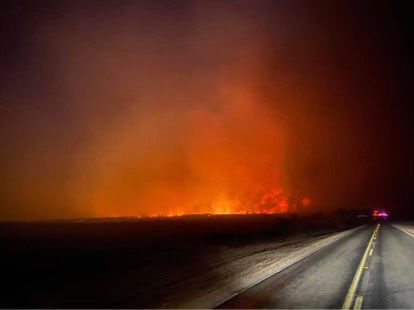Now more than ever, broadband connectivity in rural areas is an issue many are working to remedy. Brian Whitacre, agricultural economics professor and Extension specialist for rural economic development at Oklahoma State University, spoke recently on an OSU webinar about the challenges of living in rural areas where broadband is not available and the progress being made to improve access to internet.
Whitacre described broadband as high-speed, always on internet access. He said the speed threshold for how quick a connection has to be to be considered broadband has changed over the years.
“Right now, we are still using a 2015 definition of 25 megabits per second download and three megabits per second upload, however, some say that sum is outdated,” Whitacre explained. “A Netflix connection requires about five megabits, Zoom calls require one megabit and Amazon recommends 15 megabits for best-quality video. So, you can see how a household doing some teleworking and conferences for school can quickly eat up those 25 megabits.”
Part of the reason some say the definition of broadband should be updated is due to need for faster speed and increased internet usage over the last few years. In fact, Whitacre said more than 50% of residential fixed connections were over 100 megabits in 2018. Additionally, the COVID-19 pandemic brought new urgency to the need for rural broadband access.
“If you didn’t have a connection during the pandemic it was really difficult to work from home, get a medical appointment, get your kids’ school work,” he said.
Furthermore, Whitacre said research has shown broadband matters for many rural qualities of life outcomes including: income growth, civic engagement, unemployment reduction, firm location, entrepreneurship, housing values and farm productivity.
Oklahoma’s productivity
So how bad is the problem and where does Oklahoma fall in broadband accessibility? Whitacre said for rural areas, the national average for people with broadband availability is 82.8% and Oklahoma’s rural areas average 71.8%. Oklahoma is ahead of Arkansas, which is only 63.3%, but behind Kansas that is 87.3%, and Texas, which is 83.9%. Whitacre said progress is ramping up and the number of people with broadband availability has been improving since 2017. However, Whitacre made it clear that availability is not the same as adoption.
“Availability is where the technology exists and is accessible for Oklahoma residents,” he said. “Adoption is the percentage of households subscribing to a broadband provider. The United States rural average for cable, DSL and fiber internet adoption is 70.8%, but for Oklahoma, it is only 59.4%.”
Whitacre said broadband adoption is low for certain demographics and largely driven by cost. He said of the residents who make more than $75,000 in household income, only 5.6% do not have internet. Of the people who make less than $20,000, 37% do not have internet according to the 2019 U.S. Census. Whitacre, who serves on Oklahoma’s Rural Broadband Expansion Council, said many organizations are working to improve availability and adoption percentages by providing financial aid to residents and incentives for providers to expand in rural areas.
“There is a lot of money available through various stimulus packages that have been passed for COVID-19, in particular the $350 billion American Rescue Fund, which has direct funds for states, counties, and cities,” he said. “Two other packages include the Coronavirus Capital Projects Fund and the NTIA Tribal Broadband Program. We encourage county Extension educators to talk to their local county officials who decided what to do with this money.”
Whitaker encouraged all U.S. residents who meet the requirements to apply for the Emergency Broadband Benefit Program. This $3.2 billion program provides a $50 to $70 monthly subsidy for broadband connections for low income households. Oklahoma is a top five state as far as applicants signing up for this program. Applicants can also receive a $100 discount on a laptop or tablet device. For more information on that program, visit www.getemergencybroadband.org/.
He also highlighted the OSU Rural Library Hotspot Loan Program, which works directly with rural libraries to loan out hotspots that offer free internet connections utilizing cellular networks. The program, which began in 2017, provides four to 10 devices per library, with OSU paying for the device and date for the first year, then they ask the library to take over the data payments the next year. The libraries are able to loan out devices to library patrons for one week at a time, providing another internet source for rural residents.
Whitaker also discussed challenges associated with the broadband availability maps through the Federal Communications Commission. All providers report census blocks served to the FCC every six months. Residents can find their provider and if they have broadband availability by visiting www.broadbandmap.fcc.gov/#/. However, Whitacre said rural broadband availability is dramatically overstated and the FCC data is often misleading.
“The problem with this is if one provider serves one house in a census block, the whole block is considered served and that is not necessarily true,” he said.
The FCC is currently shifting to a polygon method where the providers will have to provide shape files of polygons where they actually serve, which should weed out some of the confusing information. Connectivity has become a necessity in this day and age and many, like Whitacre, will continue to strive to bring rural Oklahoma and America online.
Lacey Vilhauer can be reached at 620-227-1871 or [email protected].




